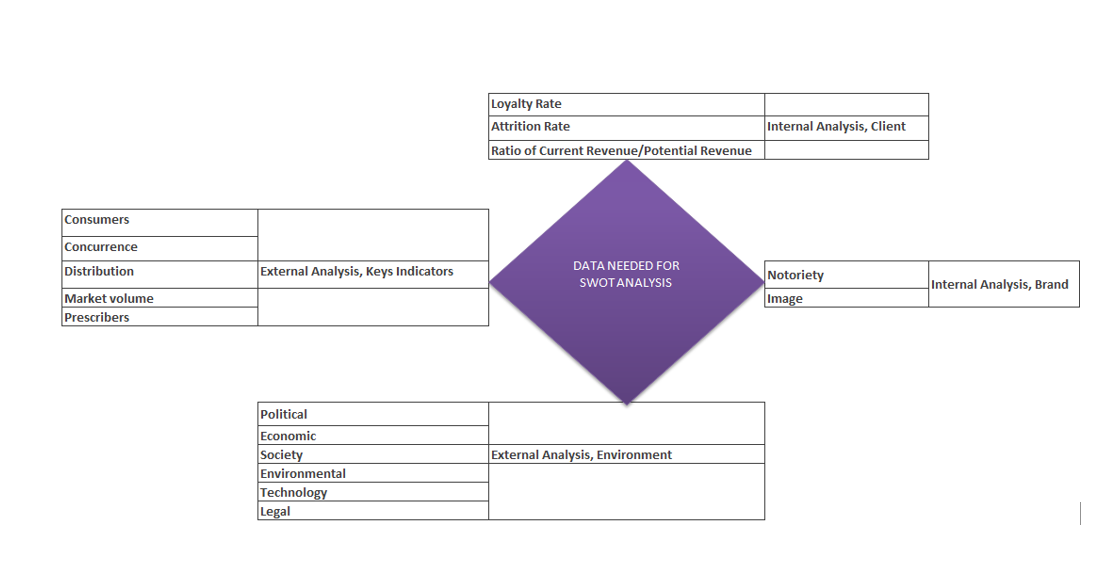How to Build Swot Analysis Scientifically?

Deprecated: array_key_exists(): Using array_key_exists() on objects is deprecated. Use isset() or property_exists() instead in /home1/sevenk4d/public_html/businessjug.com/vendor/twig/twig/lib/Twig/Template.php on line 580
BUSINESS CHALLENGES
Mr. Gbonloghish is the founder of a training center. Its mission is to close the gap between graduate and company as the HR manager are preaching every time. To excel than its competitors, he approached your consulting firm to help his company. His Company needs a unique strategy which will differentiate it from others. Besides, he suggested that you use SWOT Analysis.
You: Big, small or even personal, successful strategies must start with SWOT Analysis.
"If that's the case, get the work done within 3 days", He replied.
You: No, it will take a month.
Taking company strengths, weaknesses, opportunities, and threats will need one month? He asked.
Yes, experts diluted the SWOT Analysis by giving place to subjectivity.
Our CEO rendered arm in this term: you are the expert, that is why we brought you, help us with your expertise.
Let's start with a work done by Nathalie Van Laethem. She is the associate manager, responsible for offer, marketing & web-marketing expertise at Cegos.

Companies usually fill the strength(s) area by looking at what they have done. Although all those techniques are good, it will be very difficult for someone to admit to his/her weaknesses.
To avoid biases in the SWOT Analysis, we can get weaknesses through a scientific method. Only your customers will tell you, your real strengths and weakness than yourself.
This lead me to help you, about the data to use and conduct a scientific SWOT Analysis.
SWOT: what marketing data?:
SWOT Analysis helps in marketing decisions which guide a brand, the product, or service lines for the next three years. It is, thus, important to take into account the data that will impact its decisions. Here in the form of Mindmap, the information to analyze and synthesize under the SWOT matrix.
What to keep for external analysis:
The data on macroeconomic influences with the acronym PESTEL. Which stands for Political, Economic, Societal, Technological, Environmental and Legal. It is about having a prospective vision in the medium term, about three to five years. So societal data as new consumption behaviors: more sharing of knowledge and information, expansion of the C to C, the economy of Consumers to consumers with sites like Airbnb, Uber, etc ... Of course, the data on the market to which one is addressed.
What to keep for internal SWOT analysis:
Data on the brand or the range of products, such as the awareness rate or the image conveyed to consumers.
It is important to have information on your products or services. But you also need details by product, by customer segment, and by geographical region. These data are generally the volume of sales, turnover, and profitability. Information on the brand's customers is also very useful. The loyalty rate to be compared to the average loyalty rate of the sector of activity.
Comparison of external and internal data:
What is important is to be able to compare internal facts to external facts. We analyze the life cycle of the sector in which we operate and place the life cycle of our products. We can compare the margin level of our products with the average margin level of the sector. We can also compare the loyalty or attrition rate of our clients versus the average rates of the sector.
This is how the SWOT Analysis takes all its credibility.
At Se.Consulting we have developed a technique to build a scientific SWOT Analysis. This technique draws its foundation through the outcomes of customer satisfaction research.
Note, we have loyalty rate and attribution rate. These two indicators play an important role in any business revenue. For instance, if loyalty and attribution rates are very high they will be the company’s weaknesses. And if they are very low, they will be the company’s strengths. To arrive at one of these situations, it will depend on how the company considers its customer satisfaction research.
Every company, no matter its size, must take into consideration the customer satisfaction research. It must be the company pentagon. Customer satisfaction research must be the heart of the company.
Every year companies spend billions of dollars on advertising. And the from year to year the ad expenditure is increasing. The goal is to increase the sales by acquiring new customers. But sometimes the Return On Investment (ROI) is too low even negative. Something went wrong somewhere. What I observed is that the ad message can be hijacked by the TV consumers, radio listeners or social media users.
How is it possible?
As even many ad agencies think an ad is only to get more new customers but it has a powerful side ignored by many. When the existing customer views, listens or reads ads something positive or negative quick off inside of him/her.
-- If the quality of the products or services promised by the company is met at 100%, old clients will become more loyal. From that, he/she will assure potential customers the quality of the product or service. I personally, when a friend or a family member tells me about a product he has used before I usually don't hesitate to purchase it. As a human being, it is equal to everybody. So I can say that existing customer has the power to convince potential customers to buy the product than most ads.
-- If the quality promised is not met by the existing customer, the opposite happens.
If you please your customer very well, you develop him/her. And you can use them with no cost, with a powerful arm of convincing their friends and relatives.
So customer satisfaction research results must be used to build a powerful SWOT Analysis and derive from it the strategic axis.
